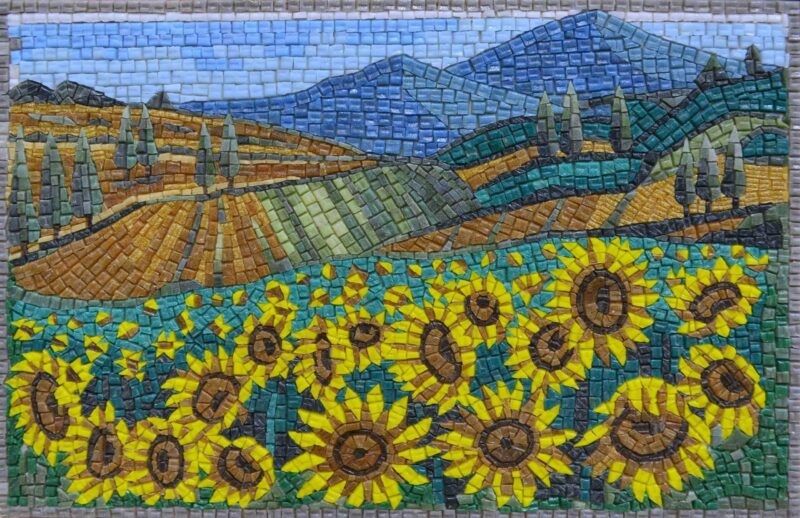Mosaic art is a captivating and ancient form of artistic expression that has been practiced for thousands of years across various cultures and continents. It involves the assembly of small pieces of colored glass, stone, or other materials to create a complete image or pattern.
The versatility and vibrant colors of mosaic art have made it a popular choice for both public and private spaces, and it continues to be a beloved form of artistic expression today.
8. Traditional Mosaic Art
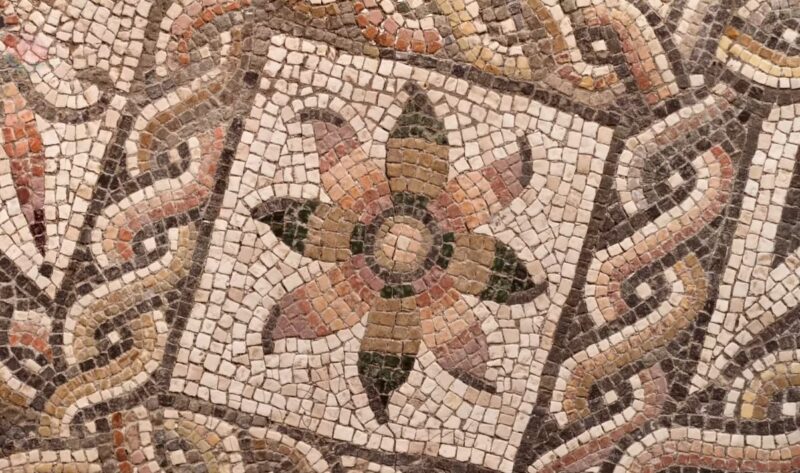
Traditional mosaic art has a rich history that dates back to ancient civilizations. The Greeks and Romans were particularly renowned for their intricate mosaic floors and walls, which often depicted scenes from mythology, daily life, and nature.
History and Characteristics
The earliest mosaics were made from pebbles, and as the art form evolved, artists began to use tesserae—small, square pieces of colored stone or glass. These tesserae were meticulously arranged to create detailed and vibrant images. Traditional mosaics often have a timeless and classical feel, with an emphasis on realism and attention to detail.
Modern Applications
Today, traditional mosaic art continues to be a popular choice for flooring, wall decorations, and public art installations. Artists and craftsmen create contemporary pieces that draw inspiration from ancient techniques, while also incorporating modern materials and themes.
7. Glass Mosaic Art
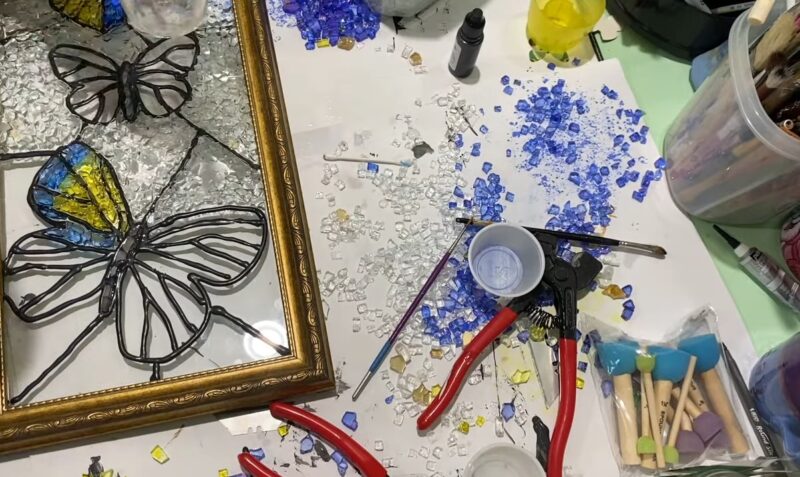
Glass mosaic art is known for its luminous quality and vibrant colors. This type of mosaic art utilizes pieces of colored glass to create stunning visual effects.
History and Characteristics
Glass mosaic art has been practiced for centuries, with early examples dating back to Ancient Rome. The use of glass allows for a wider range of colors and a unique translucency that is not possible with stone or ceramic tesserae. Glass mosaics often have a glossy finish and can be used to create intricate patterns and images.
Modern Applications
In contemporary settings, glass mosaic art is commonly used for decorative purposes, such as backsplashes in kitchens and bathrooms, as well as in public art installations. The reflective quality of the glass adds an extra dimension to the artwork, making it a popular choice for both interior and exterior spaces.
6. Ceramic Mosaic Art
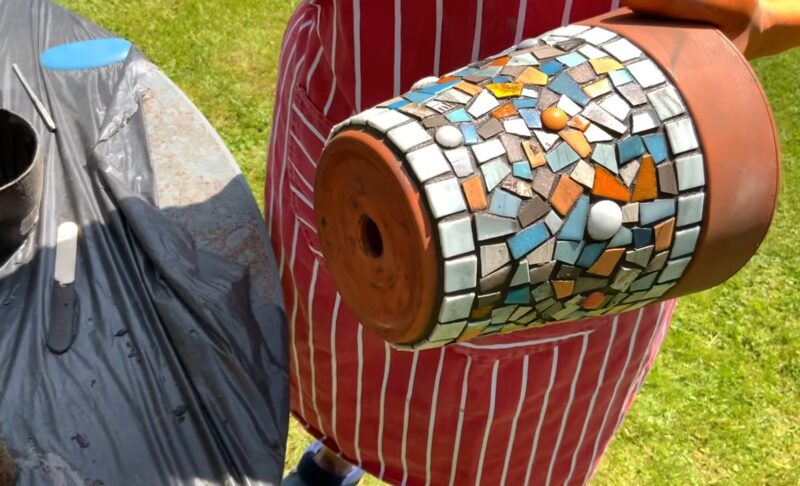
Ceramic mosaic art involves the use of ceramic tiles or pieces to create a mosaic. This type of mosaic art is known for its durability and versatility.
History and Characteristics
Ceramic mosaic art has a long history, with examples dating back to ancient Mesopotamia. The use of ceramic allows for a wide range of colors and finishes, from glossy to matte. Ceramic mosaics can be used to create both abstract patterns and realistic images.
Modern Applications
Today, ceramic mosaic art is commonly used in architectural settings, such as flooring, walls, and facades. Therefore, it could be an interesting solution for your bathroom. It is also a popular choice for public art installations and community art projects, as it is durable and can withstand the elements.
5. Pebble Mosaic Art
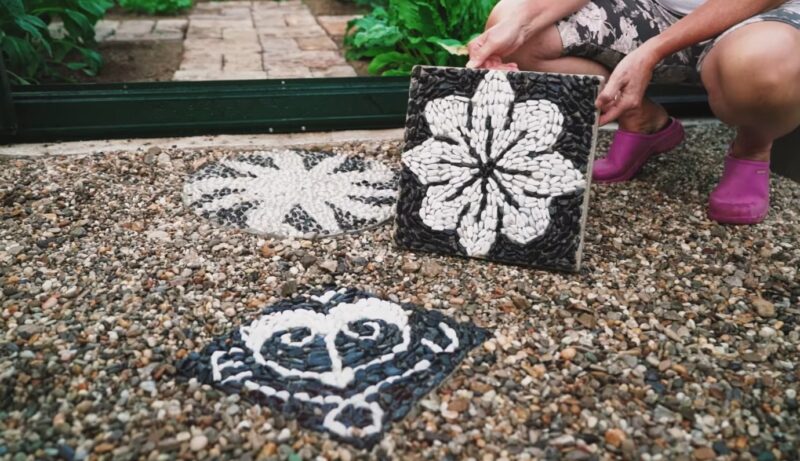
Pebble mosaic art is a form of mosaic art that uses natural pebbles to create patterns and images. This type of mosaic art has a rustic and organic feel.
History and Characteristics
Pebble mosaic art dates back to ancient Greece, where it was used to create flooring and decorative paths. The natural colors and shapes of the pebbles are used to create a harmonious and balanced design. Pebble mosaics often have a more abstract and free-form style, with an emphasis on texture and movement.
Modern Applications
In modern settings, pebble mosaic art is often used in landscaping and garden design, as well as in public art installations. The natural materials and organic design make it a popular choice for outdoor spaces.
4. Smalti Mosaic Art
Smalti mosaic art is a type of mosaic art that uses smalti—small, rough pieces of colored glass with a glossy finish. This type of mosaic art is known for its vibrant colors and textured surface.
History and Characteristics
Smalti mosaic art originated in Byzantium and was later adopted by Italian artists during the Renaissance. The smalti tesserae are cut from larger pieces of glass, resulting in a rough and irregular surface. The vibrant colors and reflective surface of smalti make it a popular choice for creating luminous and eye-catching mosaics.
Modern Applications
Today, smalti mosaic art is commonly used in religious and public art installations, as well as in decorative pieces. The unique texture and vibrant colors of smalti make it a popular choice for artists and craftsmen.
3. Micro Mosaic Art
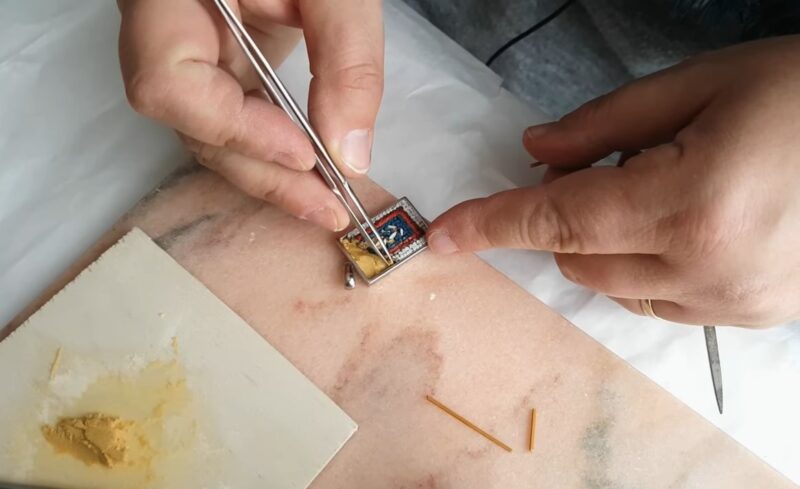
Micro mosaic art is a form of mosaic art that uses extremely small pieces of tesserae to create intricate and detailed images. This type of mosaic art requires a high level of skill and precision.
History and Characteristics
Micro mosaic art originated in Rome in the 18th century and was popularized during the Grand Tour era. The tiny tesserae, often made of glass or enamel, are used to create detailed and realistic images, often of landscapes, portraits, or scenes from mythology. Micro mosaics have a smooth and almost painterly quality, with an emphasis on detail and precision.
Modern Applications
Today, micro mosaic art is often used in jewelry and decorative arts. The intricate and detailed nature of micro mosaics make them a popular choice for creating unique and exquisite pieces.
2. Recycled Mosaic Art
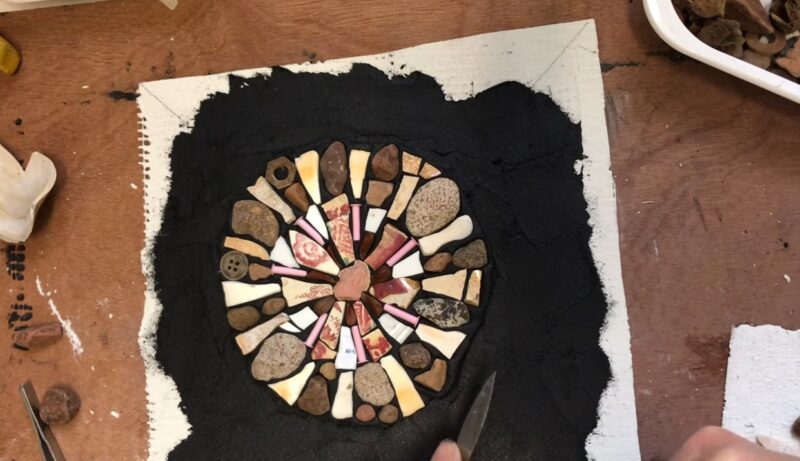
Recycled mosaic art is a form of mosaic art that uses recycled or found materials to create a mosaic. This type of mosaic art is known for its eco-friendly nature and creative use of materials.
History and Characteristics
Recycled mosaic art has gained popularity in recent years as a form of sustainable art. Artists use a variety of recycled materials, such as broken ceramics, glass bottles, and scrap metal, to create their mosaics. The use of recycled materials adds an extra layer of meaning to the artwork, often with a focus on environmental themes.
Modern Applications
In contemporary settings, recycled mosaic art is often used in public art installations and community art projects. The use of recycled materials makes it a cost-effective and eco-friendly option for creating large-scale mosaics.
1. 3D Mosaic Art
3D mosaic art is a form of mosaic art that adds a dimensional aspect to the traditional flat mosaic. This type of mosaic art creates a dynamic and interactive experience for the viewer.
History and Characteristics
3D mosaic art is a relatively new form of mosaic art, with artists experimenting with adding dimension to their mosaics in various ways. This can be achieved through the use of layered tesserae, creating a relief effect, or by arranging the tesserae in a way that creates the illusion of depth. 3D mosaics often have a modern and contemporary feel, with an emphasis on form and movement.
Modern Applications
Today, 3D mosaic art is used in a variety of settings, from public art installations to interior design. The dimensional aspect of 3D mosaics adds an extra layer of interest and interaction, making it a popular choice for public spaces and art installations.
Unique Appearance as a Key Feature
Mosaic art has stood the test of time, continually evolving while maintaining its unique charm and appeal. The tactile nature of the art form, combined with the endless possibilities for creativity, ensures that mosaic art remains a beloved medium for artists and art enthusiasts alike.
Timeless Art Form
The history of mosaic art spans thousands of years, with each era and culture contributing to its development and style. Despite changes in materials and techniques, the core principles of mosaic art have remained consistent, providing a tangible link to the past and a foundation for future innovation.
Here are some of the oldest techniques and examples of mosaics from ancient times.
| Type of Mosaic Art | Origin | Fun Facts |
|---|---|---|
| Traditional Mosaic Art | Ancient civilizations, particularly Greeks and Romans | – Depicted scenes from mythology and daily life. – “Beware of the Dog” mosaic in Pompeii. |
| Pebble Mosaic Art | Ancient Greece | – Simple black and white patterns to complex designs. – “Lion Hunt” mosaic in Pella. |
| Ceramic Mosaic Art | Ancient Mesopotamia | – Wide range of colors and finishes. – Ishtar Gate of Babylon with vibrant blue tiles. |
| Smalti Mosaic Art | Byzantium, later Italy during the Renaissance | – Made from molten glass poured into slabs. – Featured in Byzantine churches like Hagia Sophia. |
Medium for All
One of the most appealing aspects of mosaic art is its accessibility. Artists of all skill levels can engage with the medium, from beginners working on small, simple projects to master craftsmen creating large-scale installations. The variety of materials available also means that there is a type of mosaic art to suit every taste and budget.
It Will Remain An Important Aspect of Art
As we look to the future, it is clear that mosaic art will continue to play a significant role in the artistic landscape. The combination of tradition and innovation provides a rich ground for exploration and creativity.
Innovation and Technology
Advancements in technology are opening up new possibilities for mosaic art, from digital design tools to new materials and techniques. Artists are experimenting with 3D printing, laser cutting, and other technologies to push the boundaries of what is possible.
Sustainable Art Practices
The rise of recycled mosaic art reflects a broader trend towards sustainable and eco-friendly art practices. Artists are finding creative ways to repurpose materials, turning waste into beautiful and meaningful artworks. This not only reduces the environmental impact of art production but also adds an extra layer of meaning and relevance to the work.
FAQs
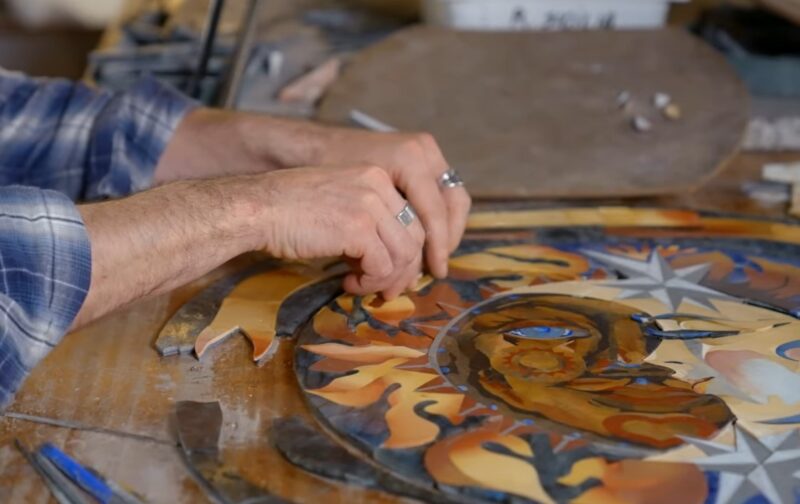
What is the most popular mosaic?
The most popular mosaic is arguably the Alexander Mosaic from Pompeii, which dates back to the 2nd century BCE. It depicts a dramatic scene from the Battle of Issus between Alexander the Great and Darius III of Persia.
What is the rarest mosaic art?
The rarest mosaic art is often considered to be micro mosaic, due to the intricate and time-consuming process of creating detailed images with extremely small pieces of tesserae.
Who is the most famous mosaic artist?
One of the most famous mosaic artists is Antoni Gaudí, a Spanish architect known for his unique and colorful mosaic works, including the famous Park Güell in Barcelona.
Which country is famous for mosaic art?
Italy is renowned for its rich history and contributions to mosaic art, particularly during the Roman Empire and the Renaissance. Cities like Rome, Ravenna, and Venice are home to some of the world’s most famous mosaics.
What is mosaic for Basic 4?
For Basic 4 students, mosaic can be a fun and educational art activity. It involves arranging small pieces of colored paper, tiles, or other materials to create a picture or pattern. This activity helps to develop fine motor skills, creativity, and an understanding of colors and shapes.
Summary
Mosaic art is a rich and diverse medium that offers something for everyone, from the history buff to the eco-conscious artist. As we move forward, the future of mosaic art looks bright, with endless possibilities for creativity, innovation, and sustainable practice.
